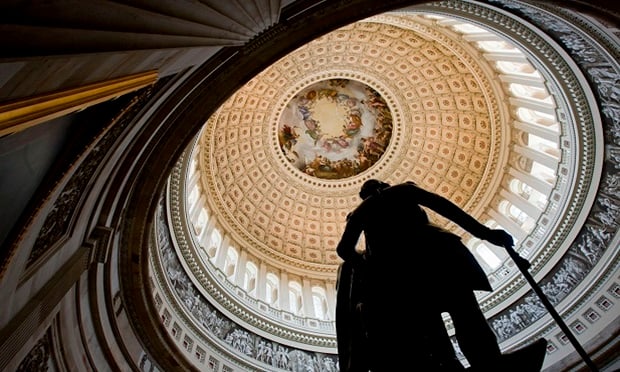In the world of politics, HealthCare.gov is either a bold agent of health care system change or a demonic agent of those scoundrels in Washington.
In the world of health insurance sales, HealthCare.gov is just another distribution channel. The system handles Patient Protection and Affordable Care Act exchange enrollment for the states in which the U.S. Department of Health and Human Services provides exchange services.
HHS has still not persuaded the states running state-based exchanges to report their exchange performance data in the format HHS uses for HealthCare.gov, and HHS does not make it easy to compare data for the 2014 open enrollment period with data for the 2015 open enrollment period.
But HHS has been publishing data for all states on the number of people known to have selected qualified health plan coverage through a PPACA exchange through Feb. 22, and the number of QHP selectors in each state who are new to the exchange system.
The numbers reflect the number of people who are on track to have QHP coverage. In many cases, the plan selectors have not yet paid for coverage. HHS considers consumers to be official QHP enrollees once they have "effectuated" their coverage by making premium payments.
The second annual open enrollment period officially started Nov. 15 and ended Feb. 15. Most states offered access to broad enrollment period extensions for at least a few days, and taxpayers who say they learn about the PPACA individual mandate penalty when they file their 2014 taxes will get a special enrollment period that will last from March 15 through April 30 in most of the country.
The total number of selectors has increased about 34 percent between April 19, 2014, and Feb. 22, 2015 — after the official end of the enrollment period and before the tax season enrollment period.
Read: PPACA enrollment extension could hurt carriers
Enrollment changes ranged from a decrease of 17 percent in Vermont, a state that was notoriously cold toward agents and brokers as it was setting up its state-based exchange, up to an increase of 343 percent in Massachusetts, a state that had terrible technical problems in 2014.
Aside from Massachusetts, the state with the strongest QHP selector growth was Louisiana. Insurers have attracted 186,277 residents of that state to exchange QHPs for 2015, 83 percent from the April 2014 selector total.
Exchange managers in five states — Idaho, Maryland, Massachusetts, Nevada and Oregon — are counting all 2015 QHP enrollees as new QHP selectors.
In the other states, the percentage of QHP business coming from QHP selectors who are new to the system ranges from 14 percent in Vermont, and 26 percent in the District of Columbia, up to 75 percent in Hawaii.
In some states, the change in the percentage of business coming from "new cases," rather than re-enrollment of existing exchange customers, may reflect the effects of technical problems that occurred last year or this year. In other states, the change may reflect fluctuations in the percentage of residents who have access to employer-sponsored coverage, or to Medicaid programs or other government health programs.
But, in some states, the change in numbers may reflect how well HealthCare.gov is doing at going out for business.
For a look at the top five generators of new exchange business (excluding the states that counted all QHP selectors as new selectors), read on.

5. Texas
Total number of 2015 exchange QHP selectors: 1,295,174
Percentage of QHP selectors who are new to the exchange system: 57%
Growth in number of QHP selectors between 2014 and 2015: 64%

4. Louisiana
Total number of 2015 exchange QHP selectors: 186,277
Percentage of QHP selectors who are new to the exchange system: 58%
Growth in number of QHP selectors between 2014 and 2015: 83%

3. South Carolina
Total number of 2015 exchange QHP selectors: 210,331
Percentage of QHP selectors who are new to the exchange system: 58%
Growth in number of QHP selectors between 2014 and 2015: 78%

2. Minnesota
Total number of 2015 exchange QHP selectors: 59,704
Percentage of QHP selectors who are new to the exchange system: 60%
Growth in number of QHP selectors between 2014 and 2015: 23%

1. Hawaii
Total number of 2015 exchange QHP selectors: 12,625
Percentage of QHP selectors who are new to the exchange system: 75%
Growth in number of QHP selectors between 2014 and 2015: 47%
HHS data for all states
New HHS exchange customers
| ||||
| Share of 2015 enrollees who are new to the exchange | Total 2015 exchange QHP selectors | Total 2014 exchange QHP selectors | Change in total QHP selectors | |
| Alabama | 54% | 171,641 | 97,870 | 75% |
| Alaska | 52% | 21,260 | 12,890 | 65% |
| Arizona | 48% | 205,666 | 120,071 | 71% |
| Arkansas | 44% | 65,684 | 43,446 | 51% |
| California | 35% | 1,412,200 | 1,405,102 | 1% |
| Colorado | 28% | 140,327 | 125,402 | 12% |
| Connecticut | 38% | 109,839 | 79,192 | 39% |
| Delaware | 51% | 25,036 | 14,087 | 78% |
| District of Columbia | 26% | 18,465 | 10,714 | 72% |
| Florida | 55% | 1,596,296 | 983,775 | 62% |
| Georgia | 55% | 541,080 | 316,543 | 71% |
| Hawaii | 75% | 12,625 | 8,592 | 47% |
| Idaho | 100% | 97,079 | 76,061 | 28% |
| Illinois | 50% | 349,487 | 217,492 | 61% |
| Indiana | 50% | 219,185 | 132,423 | 66% |
| Iowa | 53% | 45,162 | 29,163 | 55% |
| Kansas | 52% | 96,197 | 57,013 | 69% |
| Kentucky | 26% | 106,330 | 82,747 | 29% |
| Louisiana | 58% | 186,277 | 101,778 | 83% |
| Maine | 47% | 74,805 | 44,258 | 69% |
| Maryland | 100% | 120,145 | 67,757 | 77% |
| Massachusetts | 100% | 140,540 | 31,695 | 343% |
| Michigan | 42% | 341,183 | 272,539 | 25% |
| Minnesota | 60% | 59,704 | 48,495 | 23% |
| Mississippi | 56% | 104,538 | 61,494 | 70% |
| Missouri | 52% | 253,430 | 152,335 | 66% |
| Montana | 41% | 54,266 | 36,584 | 48% |
| Nebraska | 53% | 74,152 | 42,975 | 73% |
| Nevada | 100% | 73,596 | 45,390 | 62% |
| New Hampshire | 40% | 53,005 | 40,262 | 32% |
| New Jersey | 48% | 254,316 | 161,775 | 57% |
| New Mexico | 51% | 52,358 | 32,062 | 63% |
| New York | 35% | 408,841 | 370,451 | 10% |
| North Carolina | 51% | 560,357 | 357,584 | 57% |
| North Dakota | 45% | 18,171 | 10,597 | 71% |
| Ohio | 47% | 234,341 | 154,668 | 52% |
| Oklahoma | 54% | 126,115 | 69,221 | 82% |
| Oregon | 100% | 112,024 | 68,308 | 64% |
| Pennsylvania | 41% | 472,697 | 318,077 | 49% |
| Rhode Island | 32% | 31,337 | 28,485 | 10% |
| South Carolina | 58% | 210,331 | 118,324 | 78% |
| South Dakota | 47% | 21,393 | 13,104 | 63% |
| Tennessee | 53% | 231,440 | 151,352 | 53% |
| Texas | 57% | 1,205,174 | 733,757 | 64% |
| Utah | 49% | 140,612 | 84,601 | 66% |
| Vermont | 14% | 31,619 | 38,048 | -17% |
| Virginia | 54% | 385,154 | 216,356 | 78% |
| Washington state | 37% | 160,732 | 163,207 | -2% |
| West Virginia | 49% | 33,421 | 19,856 | 68% |
| Wisconsin | 44% | 207,349 | 139,815 | 48% |
| Wyoming | 48% | 21,092 | 11,970 | 76% |
© 2025 ALM Global, LLC, All Rights Reserved. Request academic re-use from www.copyright.com. All other uses, submit a request to [email protected]. For more information visit Asset & Logo Licensing.







